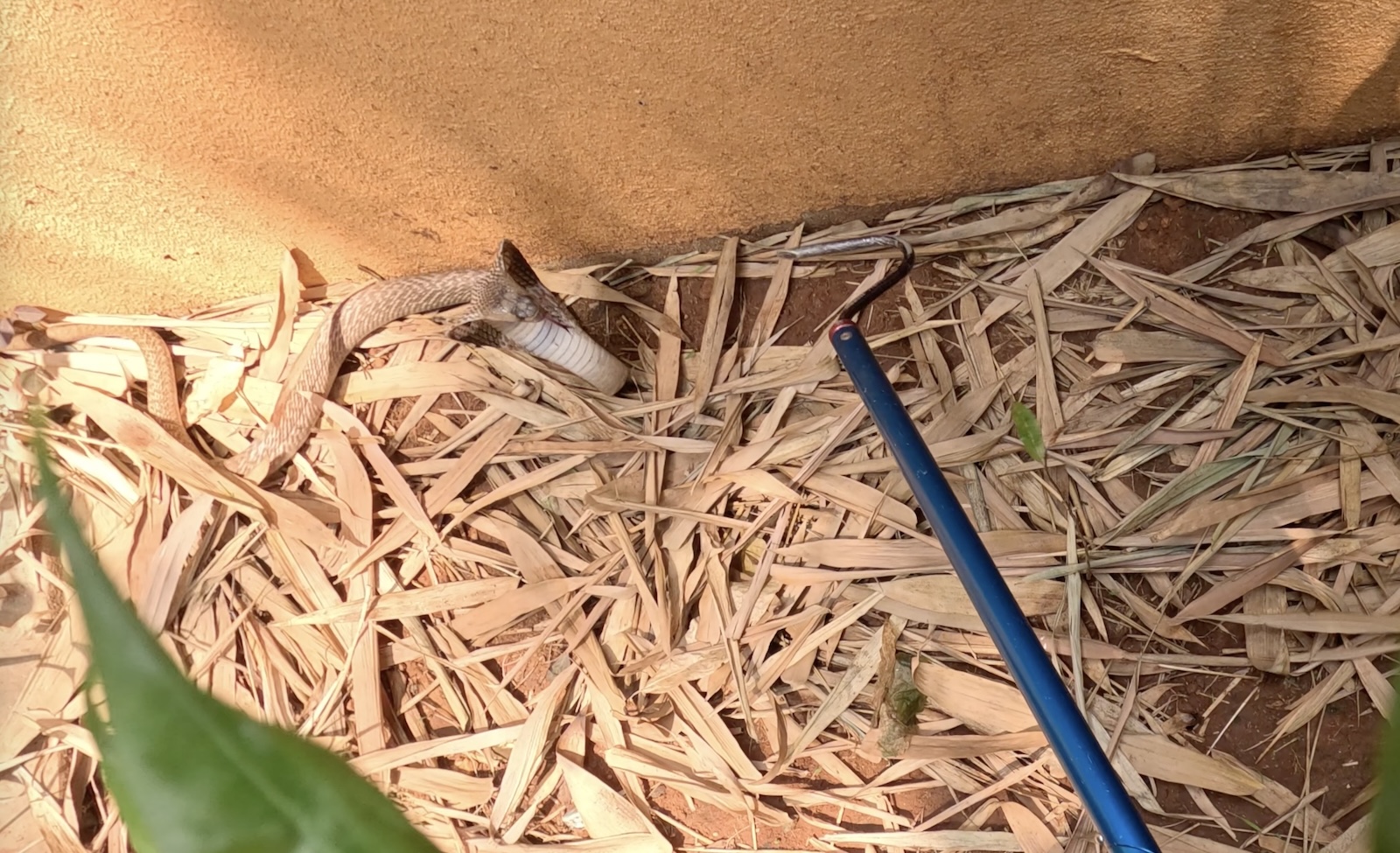There’s something delightfully ironic about rescuing a cobra from someone’s backyard… without them even realising it.
Yes, that happened.
The snake had quietly slithered from one backyard to another, and before the original resident could yell “paaaaamb!”, I had already finished the rescue. My GoPro caught the post-rescue conversation with the confused (but thankfully calm) homeowner. It’s the kind of unintentional comedy that snake rescuers often witness—but rarely document.
But this post isn’t just about that one slithery surprise or its backyard-hopping adventure.
After the rescue, a few curious kids followed me to the release spot. Their eyes were wide with a mix of awe and a few questions: “Is it poisonous?” “Will it come back?” “Is it the same as the last one?” And this—right here—is the other half of what we do.
The Rescue is Just Step One
Removing the snake safely is essential. But so is removing the fear. And that happens through conversation. Through stories, facts, and gentle myth-busting.
For years, we’ve been conditioned to see snakes as villains in our folklore, films, and forwarded WhatsApp messages. Rarely as vital parts of the ecosystem. So at nearly every rescue, we find ourselves doing more than just handling reptiles—We are handling decades of misinformation.
This time, though, I felt it was important to hit record. Hopefully, I might continue to do so for my future rescues as well.
The next time someone wonders why rescuers do what they do, or questions the point of letting the snake go instead of killing it, this video might just offer a little clarity. And hopefully, a little compassion.
Because every snake released is a life saved.
But every mind changed?
That’s a future saved.
If this made you think, smile, or question an old belief, then it’s already worth it.




